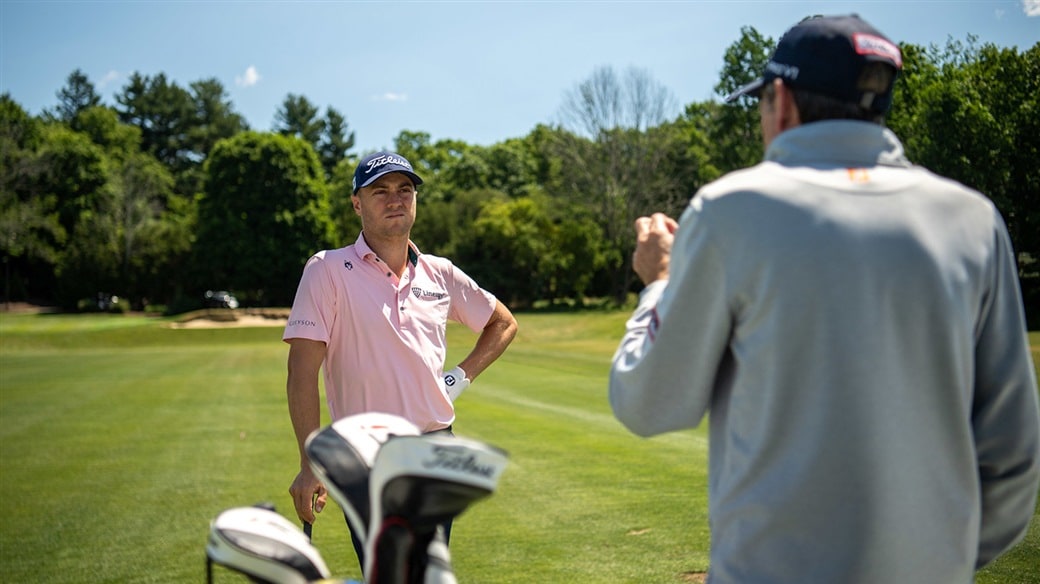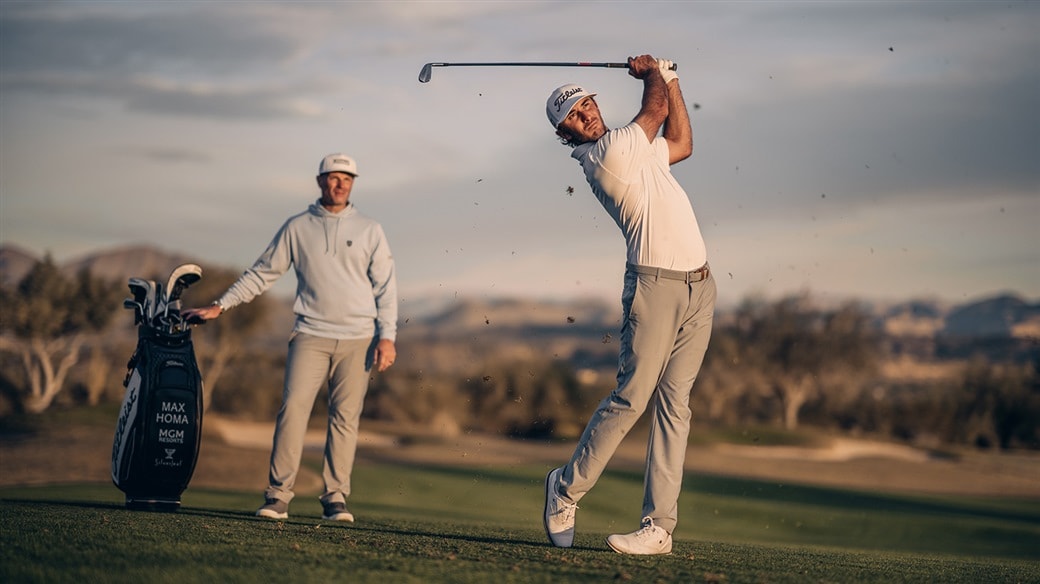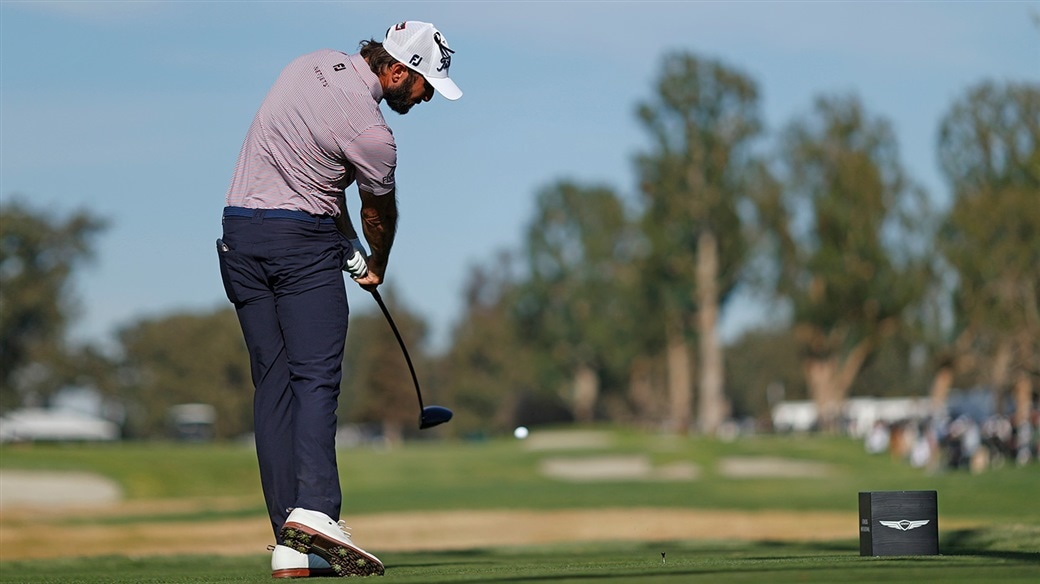
The Wannamaker trophy has made its way to upstate New York this week, where the PGA Championship will be contested on the famed East Course at Oak Hill Country Club. Oak Hill has hosted 11 major championships (and a Ryder Cup), but players haven't competed there since 2013. Even those veterans who played in the 2013 PGA Championship will face a very different challenge, as the East Course underwent a major renovation to restore the layout to Donald Ross' original vision. Many sight lines, hole contours and even some entire green complexes will be new at Oak Hill this week, but one important detail will remain constant – more players will trust a Titleist Pro V1 or Pro V1x than any other golf ball at the 2023 PGA Championship.
At Oak Hill CC, there will be an almost dead-even split between those who play a Pro V1 and those who tee up a Pro V1x. You may wonder, 'Why do players trust two different Titleist golf balls. Isn't one model better than the other?' The answer is no. Players are unique and different players need different performance from their equipment. We design different golf ball models so players can get the individualized performance they need – without adjusting their technique or shot selection to make one ball work.
To illustrate how important it is to play the golf ball that best fits your game, consider Titleist staff members, Justin Thomas and Max Homa. Both are powerful drivers of the golf ball. Both are accomplished ball strikers and able to adjust the trajectory and carry distance of their iron shots with great precision. They both have remarkable control on their finesse shots around the green. And it wouldn't surprise anyone if either of these players triumphed at the PGA Championship this week. But they succeed on the golf course in different ways.

Justin is a two-time winner of the PGA Championship, and he comes to Oak Hill as the defending champion (following his victory last year at Southern Hills). Justin plays Pro V1x. Max, who earned his 6th PGA Tour victory in January at Torrey Pines, has a game that shines on difficult courses and an unflappable mindset that will make him a threat at majors for years to come. Max favors Pro V1.
For some insight into the differences between Pro V1 and Pro V1x – and why X is the right ball for Justin and V is the best fit for Max – we reached out to Fordie Pitts, Titleist's Director of Tour Research and Validation. Fordie is on the road, working with Tour players more than thirty weeks out of the year, traveling to stops on numerous tours. He's worked extensively with Justin and Max, and he serves as a liaison between elite players and Titleist golf ball development teams back in Fairhaven, Mass.

"For this new generation of Pro V1, Pro V1x, we took a little bit of spin out of both models, but we maintained the comparative relationship between the two in terms of how they feel, fly and spin. The 2023 Pro V1 is a slightly softer golf ball, and it does tend to spin a little bit less than the 2023 Pro V1x. Aerodynamically, V also peaks a little bit lower. Conversely, Pro V1x is slightly firmer, there's a little bit more of a sound to that golf ball and it does fly a little bit higher.
Through the bag you will see a slight increase in spin with the X versus the V. The difference is smaller when you're looking at tee shots with the driver, but as you get into the irons, that's where you'll start to see a little bit more of a spin difference between the two products."
So, why does Justin benefit from a higher-flying, higher-spinning golf ball than Max?
"We actually started down the path a few years ago when Justin came to us and said, 'Hey I'm interested in a golf ball with more spin.' And what was interesting when Justin Thomas first came out on tour, he had one speed. It was fast and he had one general spin and it was high. And any time we came out with something that had a little bit more spin, it was not an option for him. But over the years, we've seen him develop. Justin is now playing the game. He's learned to swing at different speeds, control his spin.
And I remember being down in Florida at his place and him saying, "Watch, I can do this with this golf ball." And he hits this hook and it comes in and it takes a bounce and then just spins and rolls hard left. He said I can't do that with my golf ball. And at the time he was playing the 2013 Pro V1x, which was a fairly low spin product back then. And sure enough, he tried to hit that shot with the 2013 and it would curve a little and it would hit the green, but it would only spin left a little bit. So long story short, we went down the path of developing higher spin options for him."

In addition to being more workable, a higher-spinning ball gives Justin another advantage:
"Something I learned from working with Fordie," Justin said, " Everything from a 9-iron or 8-iron and above should all have around the same peak height, which was kind of mind-blowing to me. I never thought that that would be true. But going through the bag, pretty much everything should be around 100 feet high for me. Obviously, some of those drives when I try to hit them high and hard, I'm going to get 140, 150. But my stock iron shots should kind of fall in that 90 to 110 range. But with my longer irons, kind of 6- iron and up, sometimes my ball flight would get a little flat and shots wouldn't hold the greens quite as well. Because of that higher launch, higher spin, Pro V1x lets me hold greens much better with my 4-iron, 5-iron, 6-iron."
As Fordie explained, stopping power often has less to do with spin and more to with descent angle – how steeply the ball falls from its peak height down to the ground. This is particularly relevant at the majors, where course setups are long and the greens tend to be small and firm.
"There are going to be certain pin placements," Fordie said, "where players need to bring their approach shots in high so that the ball will come down steeply and stop quickly. If you come in with your flight a little lower, even though you've got spin, it might take that big hop forward and it might just go 15, 20 feet past the pin as opposed to only going 5 or 7 feet past."

Long iron performance has also been an important consideration for Max Homa.
"When he was testing the new 2023 Pro V1," Fordie said, "Max did have one concern – his 4-iron. Obviously 4-iron, you're not generating a lot of spin with that club. The concern was, is that going to be a little too hot? And it was a funny story because his coach, Mark Blackburn just said, "Well, hit one higher." And he hit one higher and sure enough, it went up in the air with good spin and Max was like, 'I'm good.'
Max's move into the new Pro V1 was interesting – and obviously he played great at Torrey and won the event. It was fantastic. It was an interesting change though, because going into the Farmers, I don't think he was necessarily thinking, 'Okay, I'm going to play the new golf ball'. But Max can get spinny and while he's not necessarily a high launch guy, he does put a lot of spin on the ball. So, something that spins a little bit less can be good for him, theoretically. It always a balancing act, though. We can't knock too much spin off because he doesn't launch the ball high enough. When you're launching it at eight degrees with your driver, you don't necessarily want to be at 2200 rpm of spin. That can be a little too flat.

And Max, the ball that he was in prior to making the switch, the reason he went to it was because he was actually looking for a little bit more heightened spin. So, it was very interesting that the '23 worked as well as it did for him. And again, it really just came down to the fact that he can get spinny and that Pro V1 just keeps that spin in a controllable area. And he goes on to win the tournament. Yeah, great story with Max."
The final consideration in golf ball selection on Tour is typically feel. At Titleist, we categorize feel as a player preference, rather than a measurable performance attribute like flight or spin, but as Fordie shared, it's an important part of the game as well as golf ball fitting:
"There are some players who will stay out of a product just because of how it feels and sounds. I should mention that there are different types of feel. There's feel from the overall compression of the golf ball and then there's feel from how hard or soft the cover layers may be. Players can be sensitive to either type. I'd like to think that performance, will outweigh feel. If a ball is flying and spinning and doing everything you need it to do, but it feels maybe just a little firm or a little soft, I'd like to think you could get used to that. But some players simply can't. The feel, the feedback they get from the way the ball sounds, is too important to ignore."
Justin Thomas is just such a player. As he told us, the sound of the club (or in his particular case, the wedge or putter) making contact with the golf ball ties directly to his sense of touch:

"The Pro V1 was a great ball, but it felt soft to me. And with a softer ball, I felt like maybe I need to putt it harder. It's weird but it's just kind of how the mind works. My speed wasn't very consistent with putting. And that was something I struggled with. And looking back at it, it was like, 'okay, this ball is great, but because of the sound around the greens and putting it's not right for me'. I like that click when I chip and putt, just the way you can hear it a little bit. So Pro V1x turned out to be the better all-around choice for my game."

Regardless of which golf ball model a player chooses, perhaps the biggest performance consideration is consistency. For tour players, this means that the golf ball flies, spins and feels the way the player expects on all shots, regardless of conditions, regardless of what is at stake. As Max told us,
“You never want to hit a great shot, something that feels good off the face and look up and be uncertain where it's going to go. I've always liked the predictability of a golf ball, and that's why I've played Pro V1. You would like to know, if you're honest with yourself on how you hit it, that the reason the ball either spun more or spun less is because you either hit it a little more flat and flush, or maybe you missed it a little and it went up. But I like being able to look up and know exactly where that ball is and how that ball is going to fly based off of how it felt off the club face.”
In the final analysis, players choose both Pro V1 and Pro V1x because golf is not a one-size-fits-all proposition.

"It's like anything in this game, Fordie Pitts shared. "It's player dependent. Some guys need more height, more spin, some guys need less. Some have a strong feel bias and other do not. That's why we need to have a comprehensive matrix – the right mix of golf ball products to be able to satisfy all those performance needs."
• • •
Our sincere thanks to Justin, Max and Fordie and good luck to all of #TeamTitleist at the 2023 PGA Championship!
Justin Thomas | Why I Play the Titleist Pro V1x
Max Homa | Why I Play the Titleist Pro V1
Max Homa | Dedication to Constant Improvement